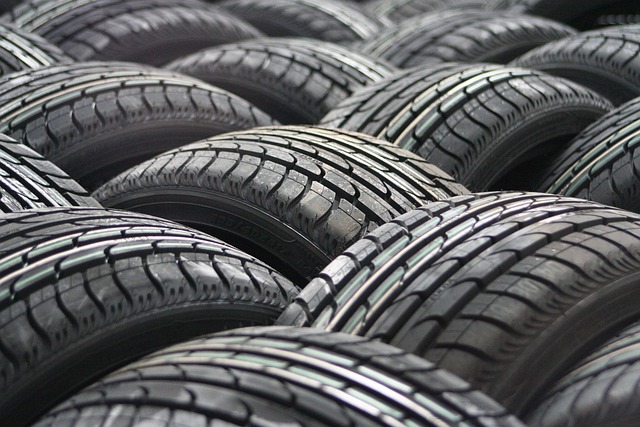Looking to register your car in California? This comprehensive guide walks you through the simple process, ensuring a smooth experience. From gathering essential documents like proof of insurance and ownership to visiting your local DMV or using their online platform, we cover it all. A key step is accurate dmv vin verification for your vehicle, which can be done easily with your VIN. Follow our steps, complete the application, and pay the registration fees to receive your certificate promptly.
- Prepare Necessary Documents for Car Registration
- Visit Your Local California DMV Office or Website
- Provide Vehicle Identification Number (VIN) Verification
- Complete Application and Pay Registration Fees
- Receive Your Vehicle's Registration Certificate
Prepare Necessary Documents for Car Registration

Before you start the registration process, ensure you gather all the essential documents required by the California Department of Motor Vehicles (DMV). This includes proof of ownership, such as a bill of sale or a vehicle history report, and valid identification like a driver’s license. The DMV also requires a completed Vehicle Registration Application form, which can be obtained online or in person.
One crucial step is to undergo a DMV VIN verification process, where you need to provide the vehicle’s unique identifier (VIN) for cross-referencing with their records. For added convenience, many people opt for mobile VIN verification services that allow them to complete this step remotely. These services use advanced technology to perform a thorough inspection and ensure your car meets all necessary standards before registration.
Visit Your Local California DMV Office or Website

The first step in registering your car in California involves a crucial task: verifying the Vehicle Identification Number (VIN). To initiate this process, head to your nearest California Department of Motor Vehicles (DMV) office or visit their official website. The DMV provides several convenient options for VIN verification, including mobile vin inspection and mobile vin verifier services.
By utilizing these services, you can ensure a smoother registration experience without the hassle of visiting the DMV in person. Through an online or in-person check, the DMV confirms the vehicle’s details, history, and current status, which is essential information for the registration process. This step is not only time-saving but also plays a vital role in ensuring that your car complies with California’s requirements before finalization of registration.
Provide Vehicle Identification Number (VIN) Verification

Before registering your vehicle in California, you’ll need to provide a Vehicle Identification Number (VIN) verification. This process ensures that your car is legitimate and has not been reported stolen or had its identity tampered with. The Department of Motor Vehicles (DMV) recommends using a reliable mobile vin verifier or scheduling an appointment for a vin inspection at an authorized location to obtain this critical information.
A valid VIN is essential, as it allows the DMV to cross-reference your vehicle’s details against their records. This verification step helps maintain the integrity of California’s vehicle registration system and ensures that only legitimate cars are on the road. Make sure you have your car’s VIN readily available, typically found on the vehicle’s certificate of ownership or in its manual, to streamline the registration process.
Complete Application and Pay Registration Fees

After gathering your necessary documents, it’s time to complete the registration process with a simple application and payment. The first step involves filling out an Application for Title and Registration form, which can be obtained from any California Department of Motor Vehicles (DMV) field office or downloaded online. Ensure all information is accurate and up-to-date, including your personal details, vehicle description, and current address. This form requires a comprehensive list of required documents, such as proof of identity, residency, and insurance.
Once the application is complete, you’ll need to pay the associated registration fees. These fees vary based on your vehicle type and age, with additional charges for late registration or transferring ownership. A key step in this process involves conducting a DMV VIN verification, which ensures that your vehicle’s unique Vehicle Identification Number (VIN) is legitimate and matches the details provided. You can facilitate this through a mobile vin verifier to streamline the procedure and ensure a swift completion of your car registration.
Receive Your Vehicle's Registration Certificate

After completing your vehicle’s purchase, it’s time to receive your new car’s registration certificate. This document is crucial for legally operating your vehicle in California. To obtain it, you’ll need to conduct a DMV (Department of Motor Vehicles) vin verification, which involves checking the vehicle identification number (VIN). You can do this by visiting a local DMV office or using their online services. Alternatively, many people opt for a convenient mobile vin verification service that allows for an easy and quick inspection right from your smartphone.
For a smooth registration process, ensure your VIN is accurate and matches the data provided by the vehicle’s manufacturer. Once verified, you can proceed with filling out the necessary registration forms and providing all required documents. This typically includes proof of insurance, proof of ownership, and perhaps other identification papers. With these steps, you’ll be one step closer to officially registering your car in California.
Registering a car in California is a straightforward process, primarily facilitated by accurate preparation and DMV (Department of Motor Vehicles) vin verification. By gathering all necessary documents, visiting your local CA DMV office or website, completing the application, and paying the registration fees, you’ll soon be the proud owner of a legally registered vehicle. Remember to keep your vehicle’s registration certificate secure for future reference and proof of ownership.
